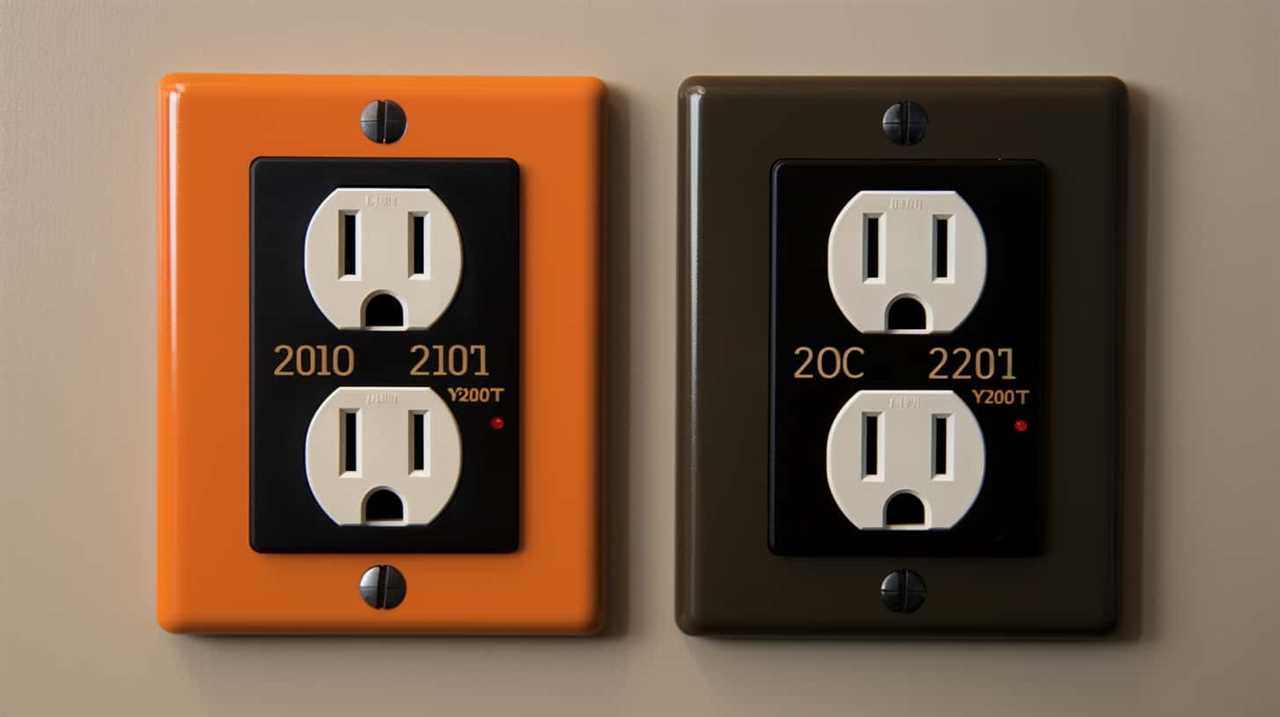Are you thinking about getting into the home appliances industry? We have some thrilling news for you.
The demand for home appliances is on the rise, creating a competitive market landscape. But don’t worry, there’s still plenty of potential for profit. With the right initial investment and capital, you can tap into market trends and consumer preferences, ensuring customer satisfaction and loyalty.
And that’s not all – there’s also room for expansion and diversification. So, let’s delve into the profitability of the home appliances business!
Key Takeaways
- Technological advancements in home appliances, such as smart features and energy efficiency, drive profitability in the industry.
- Effective marketing strategies, including thorough audience analysis and leveraging digital platforms, are essential for success in the home appliances business.
- Adhering to regulatory compliance and industry standards ensures profitability by building trust with customers and enabling effective competition.
- Cost management and adapting to economic factors are crucial for maintaining profitability in the home appliances business.
Growing Demand for Home Appliances
We have noticed a significant increase in the demand for home appliances in recent years. This growing demand can be attributed to several factors.
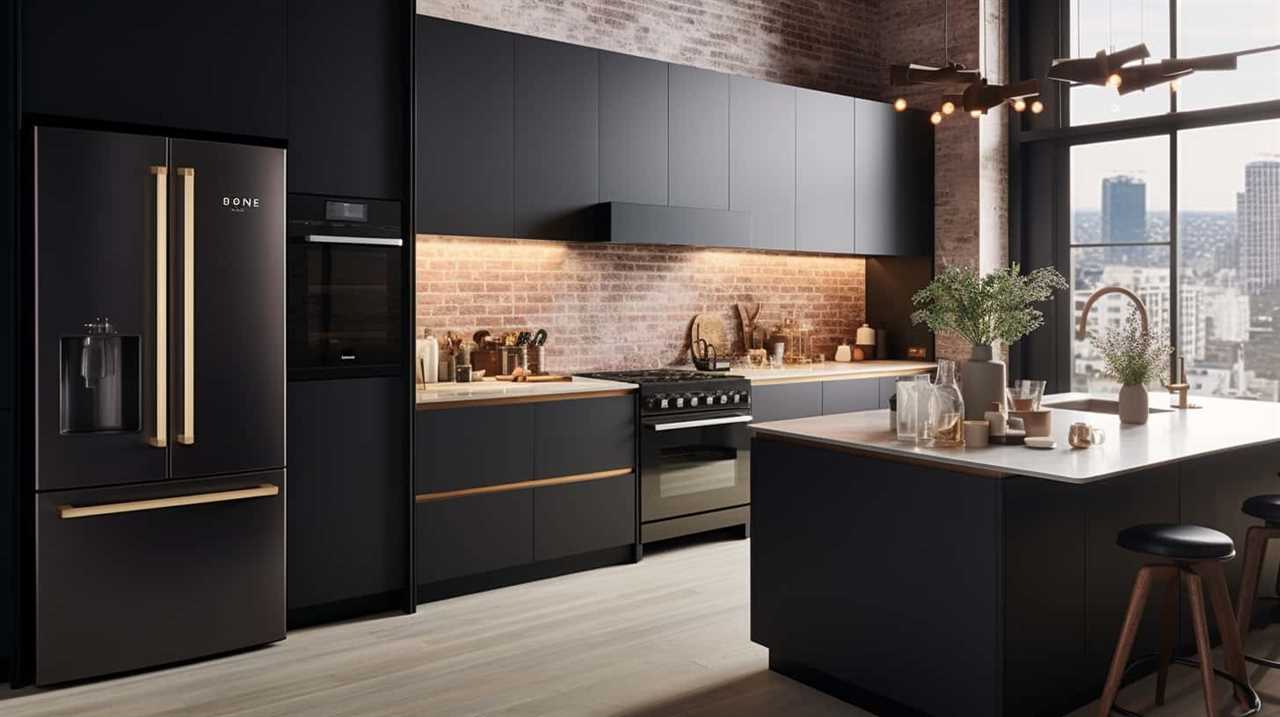
Firstly, there’s been a rise in disposable incomes, allowing consumers to invest in household appliances that enhance their quality of life.
Additionally, advancements in technology have led to the development of innovative and energy-efficient appliances, which have further fueled the demand.
However, with the increasing demand comes growing competition in the market. As more players enter the industry, it becomes crucial for manufacturers to differentiate themselves through product quality, features, and pricing strategies.
Moreover, market saturation is a concern as the demand reaches its peak. This necessitates companies to focus on diversifying their product offerings and expanding into new markets to sustain growth.

Transitioning into the next section, let’s now explore the competitive market landscape and how it impacts the profitability of the home appliances business.
Competitive Market Landscape
As we delve into the competitive market landscape of the home appliances business, it’s important to consider the impact of increasing competition on profitability.
One key aspect of competition is competitive pricing, which refers to the practice of setting prices that are in line with or lower than those of competitors. In a highly competitive market, home appliance businesses must carefully analyze their pricing strategies to ensure they remain competitive while still maintaining profitability.
Another crucial factor is customer service quality. In a crowded market, providing exceptional customer service can be a differentiating factor that sets a business apart from its competitors. By focusing on delivering excellent customer service, home appliance businesses can build customer loyalty, increase customer satisfaction, and ultimately drive profitability.

To thrive in the competitive market landscape, home appliance businesses must strike a balance between competitive pricing and superior customer service quality.
Potential Profit Margins
To assess the profitability of a home appliances business, it’s essential to evaluate the potential profit margins. Understanding the potential market competition and implementing effective pricing strategies play a crucial role in determining the profit margins. Here are some key points to consider:
- Competitive Landscape: Analyze the existing market players and their pricing strategies to identify opportunities for differentiation and competitive advantage.
- Customer Demand: Research customer preferences and buying patterns to align pricing strategies with market demand.
- Cost Analysis: Conduct a thorough cost analysis to ensure that the pricing strategy covers all expenses while providing a reasonable profit margin.
- Value Proposition: Develop a unique value proposition that justifies the pricing and establishes a strong market position.
By considering these factors, a home appliances business can optimize its potential profit margins.
Now, let’s delve into the next section discussing the initial investment and capital requirements.

Initial Investment and Capital Requirements
Our research indicates that an initial investment of approximately $100,000 is typically required to start a profitable home appliances business. To determine the feasibility of this investment, an initial investment analysis and return on investment evaluation should be conducted.
This analysis involves assessing the costs associated with acquiring inventory, setting up a physical store or online platform, marketing and advertising expenses, as well as hiring and training staff. Additionally, capital requirements for ongoing operational costs should be considered, such as rent, utilities, and maintenance.
Market Trends and Consumer Preferences
A significant number of consumers are increasingly seeking energy-efficient home appliances. This changing consumer behavior has a significant impact on the market trends in the home appliances industry.
To understand the current market landscape, it’s important to consider the following trends:

- Growing market competition: With the increasing demand for energy-efficient appliances, more companies are entering the market, intensifying the competition among manufacturers. This leads to better product offerings and competitive pricing.
- Shift towards smart appliances: Consumers are increasingly embracing smart home technology, which includes appliances that can be controlled remotely via smartphones or voice assistants. This trend is driven by convenience, efficiency, and the desire for a connected home.
- Sustainable and eco-friendly choices: Consumers are becoming more conscious of their environmental impact, leading to a preference for appliances that are eco-friendly and have a lower carbon footprint.
- Personalization and customization: Consumers are seeking appliances that fit their individual needs and preferences, such as customizable features and designs.
These market trends highlight the importance of understanding changing consumer preferences and adapting to meet their demands. By staying ahead of the curve, businesses can capitalize on the profitable opportunities in the home appliances industry.
Seasonal Fluctuations and Sales Trends
We analyze seasonal fluctuations and sales trends in the home appliances business. Understanding these trends is crucial for businesses in this industry to plan their inventory, marketing strategies, and overall operations effectively.
Seasonal fluctuations refer to the variations in demand that occur throughout the year. For example, during the summer months, there may be higher demand for air conditioners and fans, while the winter months may see a spike in the sales of heaters and electric blankets.
Sales trends, on the other hand, provide insights into the overall performance of the home appliances market over a specific period. By analyzing sales trends, businesses can identify patterns, spot opportunities, and make informed decisions to maximize their profits.

Importance of Effective Marketing Strategies
Implementing effective marketing strategies is crucial for maximizing profits in the home appliances business. A thorough analysis of the target audience is essential to understand their needs and preferences. By understanding the target audience, businesses can tailor their marketing efforts to reach the right customers with the right message.
In today’s digital age, utilizing digital marketing techniques is imperative for success. This includes leveraging social media platforms, creating engaging content, and implementing search engine optimization strategies to increase online visibility.
To evoke an emotional response in the audience, consider the following:
- Showcasing how our appliances can improve the quality of life
- Highlighting energy-efficient features that contribute to a greener planet
- Offering special promotions and discounts to create a sense of urgency
- Providing exceptional customer service to build trust and loyalty
By implementing these strategies, businesses can effectively reach their target audience and increase their sales.

Furthermore, it sets the stage for the subsequent section on the potential for recurring revenue through repairs and maintenance services.
Potential for Recurring Revenue Through Repairs and Maintenance Services
To capitalize on the potential for recurring revenue, businesses can offer comprehensive repairs and maintenance services for home appliances. This not only provides a valuable service to customers, but also creates upselling opportunities for additional home appliances. By offering repairs and maintenance services, businesses can build strong relationships with customers, increasing their likelihood of purchasing new appliances in the future. Additionally, businesses can benefit from offering extended warranty and service plans. These plans provide customers with peace of mind, knowing that their appliances are protected and can be repaired if necessary. From a business perspective, extended warranty and service plans can generate additional revenue and increase customer loyalty. Overall, offering repairs and maintenance services, as well as extended warranty and service plans, can be a profitable strategy for home appliance businesses.
| Upselling Opportunities | Benefits of Extended Warranty and Service Plans |
|---|---|
| Increase sales | Generate additional revenue |
| Build customer loyalty | Increase customer satisfaction |
| Expand customer base | Enhance brand reputation |
| Foster long-term relationships | Strengthen customer trust |
Importance of Product Quality and Reliability
The importance of ensuring product quality and reliability can’t be overstated in the home appliances business. Customers expect their appliances to perform flawlessly and last for a long time. Here are some reasons why product quality and reliability are crucial:
- Customer Satisfaction: High-quality and reliable appliances lead to satisfied customers who are more likely to recommend the brand to others.
- Brand Reputation: Consistently producing reliable products helps build a strong brand reputation in the market.
- Reduced Cost of Production: By investing in quality materials and manufacturing processes, companies can minimize the need for repairs and replacements, reducing overall production costs.
- Positive Customer Reviews: Positive reviews from satisfied customers serve as powerful testimonials, attracting new customers and boosting sales.
Ensuring product quality and reliability is vital for the success of any home appliances business. By meeting customer expectations, companies can establish strong supplier relationships and negotiate favorable pricing terms.

Supplier Relationships and Pricing Negotiations
When it comes to the profitability of a home appliances business, our success greatly relies on cultivating strong supplier relationships and engaging in effective pricing negotiations.
Supplier relationships play a crucial role in ensuring a steady supply of high-quality products at competitive prices. By establishing long-term partnerships with reliable suppliers, we can benefit from economies of scale, improved product availability, and better terms. These relationships also enable us to stay updated with industry trends, new product launches, and technological advancements.
Furthermore, effective pricing negotiations are essential to maximize profit margins. By analyzing market trends, competitor pricing, and cost structures, we can negotiate favorable terms with our suppliers. This enables us to offer competitive prices to our customers while ensuring profitability for our business.
Therefore, maintaining strong supplier relationships and engaging in effective pricing negotiations are integral to the success and profitability of our home appliances business.
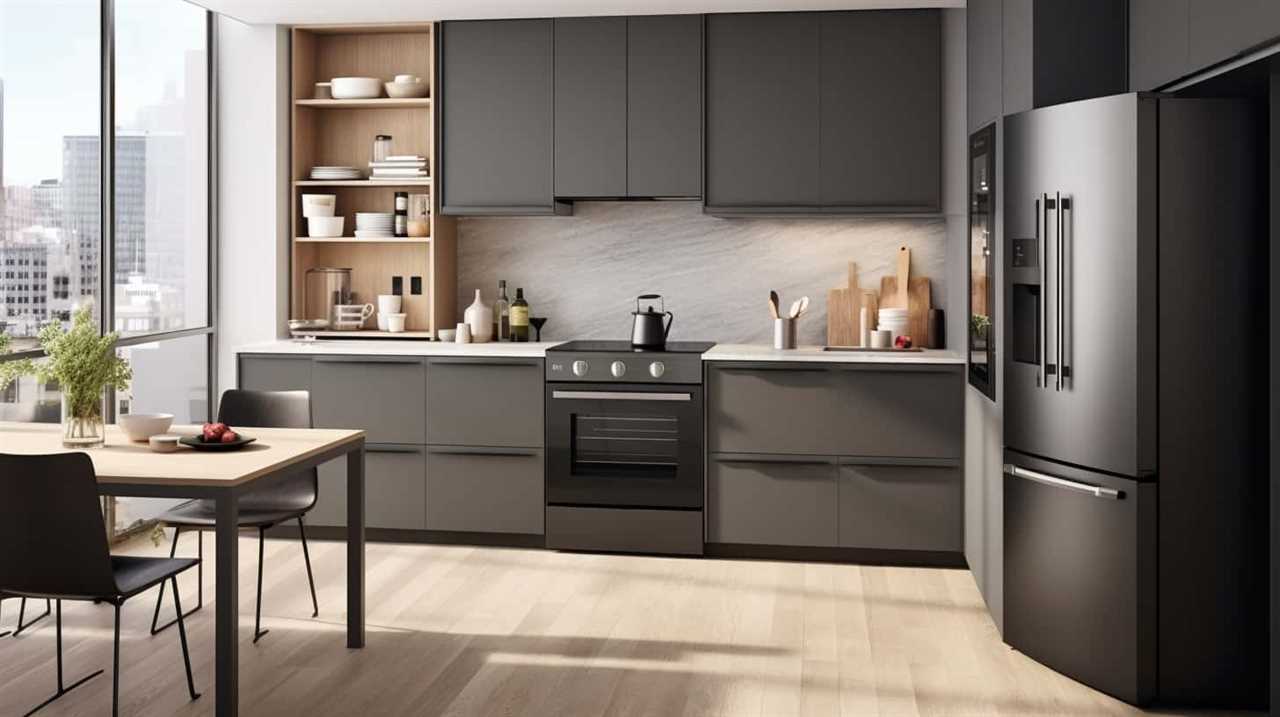
Impact of Technological Advancements on Profitability
Technological advancements have had a significant impact on the profitability of the home appliances business.
Through innovation, companies have been able to streamline processes, improve efficiency, and reduce costs.
This has resulted in higher profit margins and a competitive advantage in the market.
Moreover, as customer demand for smart and connected appliances continues to grow, companies that invest in technology to meet these demands are likely to experience increased profitability.

Technological Innovation and Profitability
As we delve into the profitability of the home appliances business, it becomes evident that technological advancements play a crucial role in determining its success. In today’s rapidly evolving market, staying ahead of the competition requires continuous innovation and adaptation to meet the ever-changing needs of customers. Technological innovation not only leads to cost savings for businesses but also enhances the overall customer experience.
Here are a few ways in which technological advancements drive profitability in the home appliances industry:
- Integration of smart features and connectivity options improves convenience and functionality, increasing customer satisfaction.
- Energy-efficient appliances reduce utility costs for consumers, making them more inclined to invest in such products.
- Advanced manufacturing processes and automation help streamline production, resulting in reduced manufacturing costs.
- Data analytics and AI-powered solutions enable companies to gain valuable insights into customer preferences and behavior, leading to targeted marketing strategies and increased sales.
Cost Savings Through Technology
Our use of technology allows us to achieve cost savings in the home appliances business.
Energy efficiency in home appliances is a key area where technology has had a significant impact. Advanced technologies, such as improved insulation, smart sensors, and energy-efficient motors, have allowed appliances to consume less energy while still delivering high performance. This not only reduces the operating costs for homeowners but also contributes to environmental sustainability by reducing energy consumption and greenhouse gas emissions.

Automation in home appliances is another area where technology has led to cost savings. Automated features, such as programmable settings and remote control capabilities, allow users to optimize appliance usage and reduce energy waste. Additionally, automation enables appliances to perform self-diagnosis and troubleshooting, minimizing the need for costly repairs and maintenance.
Customer Demand and Technology
The impact of technological advancements on profitability in the home appliances business is evident in the increasing customer demand for advanced features and functionalities. As technology continues to evolve, customers are becoming more discerning and have higher expectations when it comes to their home appliances.
This has led to a shift in customer preferences, with a growing demand for smart appliances that can be controlled remotely and offer energy-efficient options. Additionally, market competition has intensified, with companies constantly striving to innovate and stay ahead of the curve.
This has resulted in a wider range of options for customers and increased market competition. Overall, the integration of technology in home appliances hasn’t only enhanced customer satisfaction but also contributed to the profitability of the business through increased customer demand and market competitiveness.
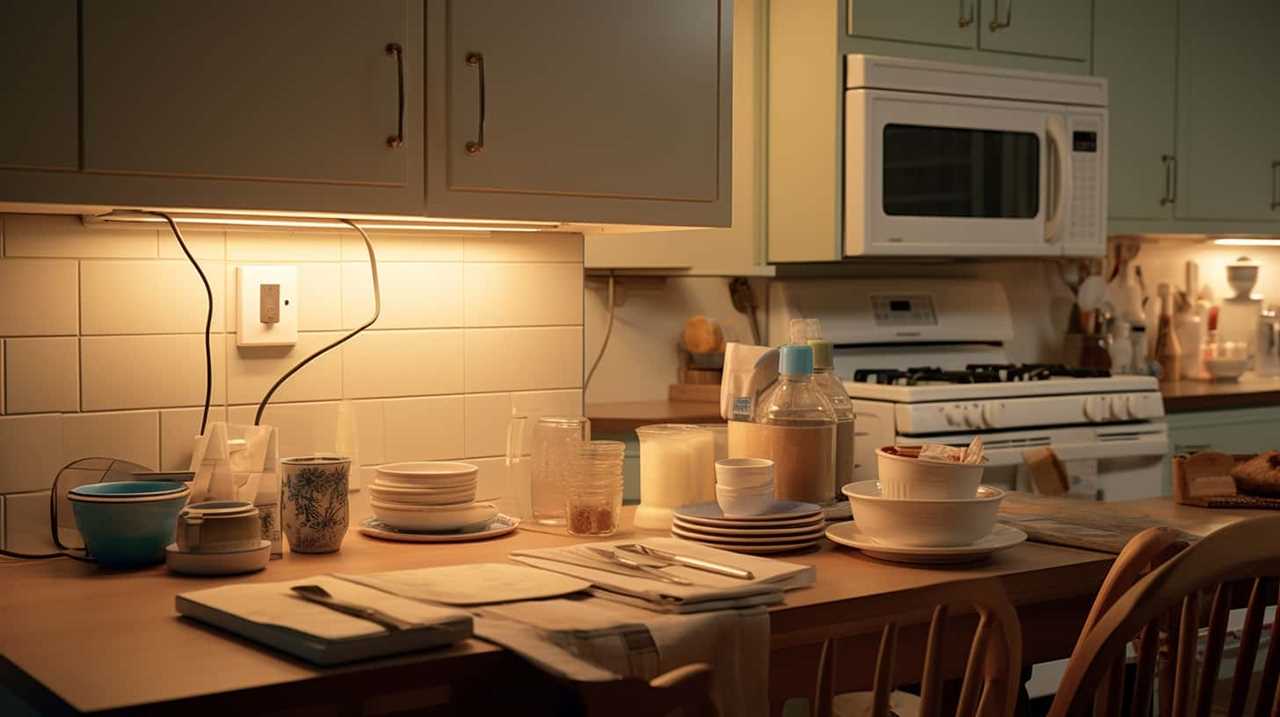
Importance of Customer Satisfaction and Loyalty
Customer satisfaction and loyalty play a pivotal role in the profitability of the home appliances business. Satisfied customers are more likely to become loyal customers, leading to repeat purchases and positive word-of-mouth recommendations. This, in turn, increases customer retention rates and attracts new customers.
The importance of customer feedback can’t be overstated. By actively seeking and listening to customer feedback, businesses can identify areas for improvement and make necessary adjustments to their products and services. This not only enhances customer satisfaction but also builds trust and loyalty.
According to a study by Bain & Company, increasing customer retention rates by just 5% can lead to a 25% to 95% increase in profits. Therefore, investing in customer satisfaction and loyalty should be a top priority for home appliance businesses.
With a strong customer base, businesses can then explore the potential for expansion and diversification, further boosting their profitability.

Potential for Expansion and Diversification
After analyzing the importance of customer satisfaction and loyalty in the home appliances business, it becomes evident that there’s significant potential for expansion and diversification.
To fully capitalize on this potential, businesses should consider the following strategies:
- Explore new markets: Identifying untapped regions and demographics can lead to increased sales and market share.
- Introduce new product lines: Offering a wider range of appliances can attract new customers and cater to changing consumer needs.
- Expand online presence: Embracing e-commerce and digital marketing can reach a larger audience and drive sales.
- Seek partnerships and collaborations: Forming strategic alliances with complementary businesses can enhance brand visibility and open doors to new opportunities.
By pursuing these expansion opportunities and diversification strategies, home appliance businesses can position themselves for long-term growth and profitability.
However, it’s important to consider the impact of economic factors on the industry’s profitability.

Impact of Economic Factors on Profitability
To continue our analysis of the home appliances business, let’s now examine the impact of economic factors on profitability.
Two significant economic factors that can affect the profitability of the home appliances business are inflation and government policies.
Inflation can have a direct impact on profitability by increasing the costs of raw materials, transportation, and labor. As the prices of these inputs rise, it becomes more expensive for businesses to produce and sell home appliances, potentially squeezing profit margins.
Additionally, government policies can also influence profitability. Changes in regulations, taxes, and trade policies can either create opportunities or pose challenges for companies in the home appliances industry. For example, favorable policies that promote domestic manufacturing and reduce import duties can boost profitability, while unfavorable policies can hinder growth and increase costs.

Understanding and adapting to these economic factors is crucial for maintaining profitability in the home appliances business.
Regulatory Compliance and Industry Standards
We ensure that our home appliances business remains profitable by adhering to regulatory compliance and industry standards.
Regulatory challenges can pose significant obstacles to businesses, but by staying up-to-date with the latest regulations, we can mitigate potential risks and maintain our profitability.
Compliance with industry standards is another crucial aspect of our business strategy. By adhering to these standards, we can ensure that our products are safe, reliable, and of the highest quality, which is essential for building trust with our customers.
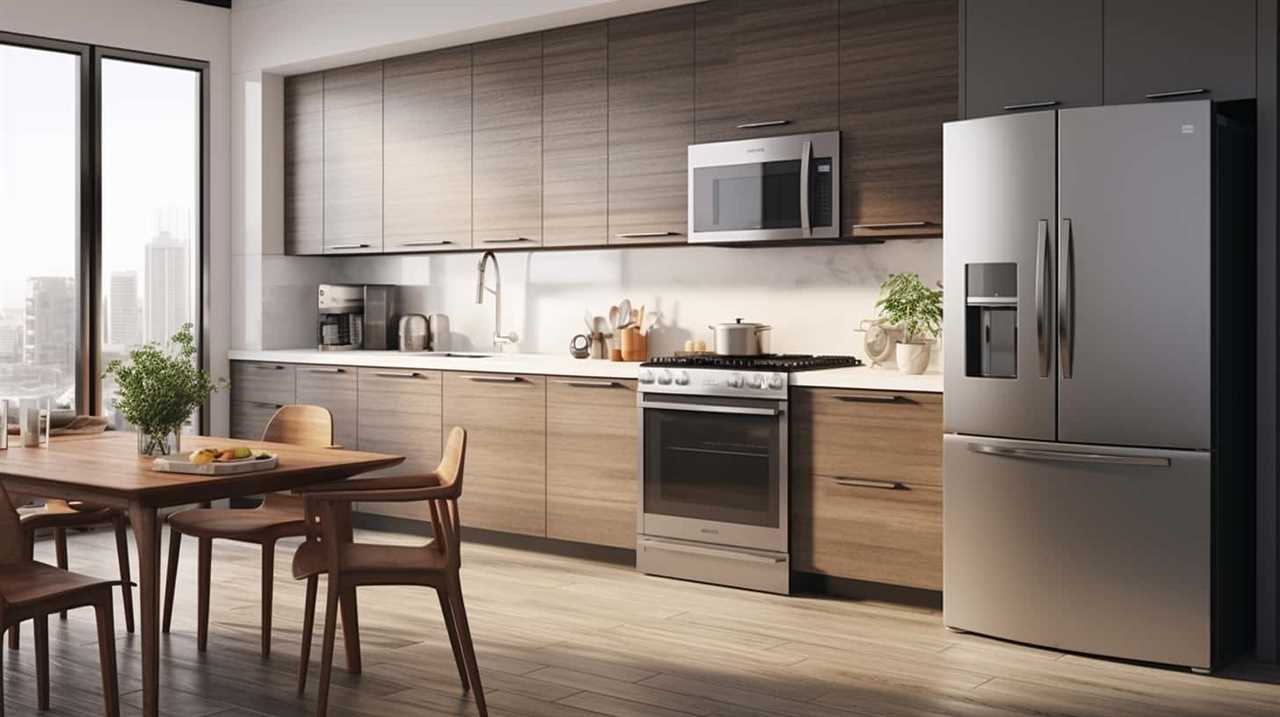
Additionally, maintaining industry standards compliance allows us to effectively compete in the market and differentiate ourselves from competitors. It also demonstrates our commitment to excellence and customer satisfaction, which can further enhance our profitability.
Frequently Asked Questions
How Do Technological Advancements Impact the Profitability of the Home Appliances Business?
Technological advancements, such as smart home technology, have significantly impacted the profitability of the home appliances business. Additionally, the impact of environmental regulations has forced companies to innovate and develop energy-efficient appliances, further enhancing profitability.
What Are the Potential Profit Margins in the Home Appliances Industry?
When analyzing the potential profit margins in the home appliances industry, we need to consider various factors such as profitability factors and competition analysis. By examining these aspects, we can gain insights into the industry’s financial viability.
How Important Is Customer Satisfaction and Loyalty in the Home Appliances Business?
Customer satisfaction and loyalty play a crucial role in the home appliances business. The importance of after sales service cannot be overstated as it directly impacts customer loyalty. Additionally, the rise of online shopping has also influenced customer loyalty in the industry.

What Are the Initial Investment and Capital Requirements for Starting a Home Appliances Business?
Starting a home appliances business requires a significant initial investment. Funding options include personal savings, bank loans, and investors. Careful consideration of the capital requirements is crucial for success in this competitive industry.
How Do Seasonal Fluctuations and Sales Trends Affect the Home Appliances Market?
Seasonal demand and sales trends heavily impact the home appliances market. Fluctuations in consumer preferences, weather conditions, and holiday seasons can affect sales. Additionally, market competition plays a significant role in determining profitability.
Conclusion
In conclusion, the home appliances business offers significant profit potential due to the growing demand and competitive market landscape.
However, success in this industry requires a focus on customer satisfaction and loyalty, as well as staying updated with market trends and consumer preferences.

Additionally, the ability to adapt to economic factors and regulatory compliance is crucial for maintaining profitability.
As the saying goes, ‘A penny saved is a penny earned,’ emphasizing the importance of cost-efficiency and strategic financial management in maximizing profit margins.

